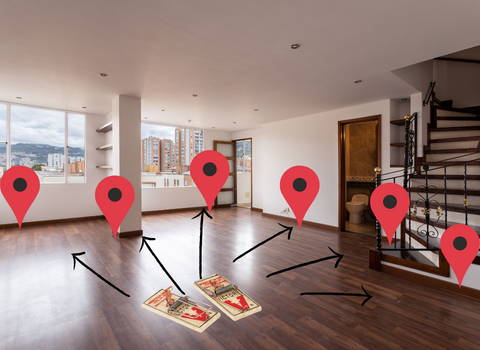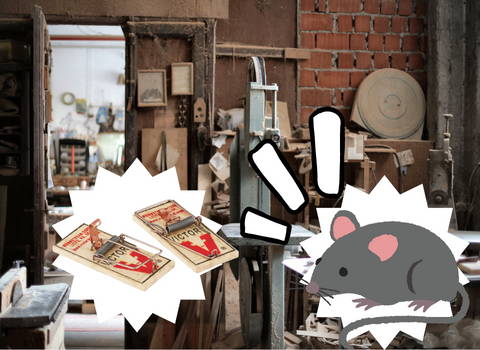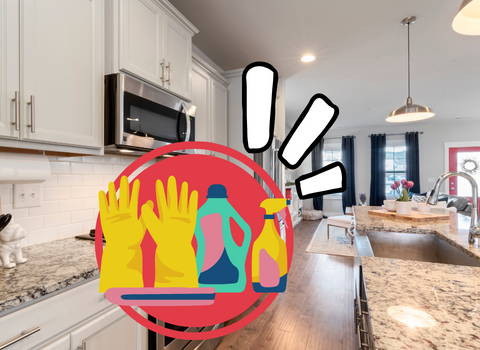Where to Place Mouse Traps
If you start noticing the presence of rodents, especially mice, in your home, you must check both inside and outside. You must check where and how they got inside and place mouse traps in these areas.
However, when signs like urine spots, new mouse droppings or rat droppings, or gnawed areas persist after a week, you are now dealing with an infestation and proper placements of mouse traps must be done.
Pre-baiting is one of the effective ways of making the mice believe that the traps will not hurt them. When planning to bait mice, you can use good old peanut butter as bait. These rodents are also nut and seed eaters, so you can also use these as bait.
Keep in mind that the use of the wrong food as bait may not force mice to come near your bait. Also, do not use too much bait as it may also attract other insects that you do not want to linger in your home.
Mice and rats tend to feel comfortable around new objects. Placing the bait on the unset mouse traps will make the mice believe it is a safe food source. As soon as you notice that the rodents are eating the bait, you can start setting the traps.

Proper Mouse Trap Placement for Effectively Catching Mice
An important reminder when you are dealing with a mouse problem using traps is keeping them out of children's and pets’ reach. Now, when trying to reduce the population of rodents, traditional snap traps are recommended to be used. However, using poison and bait stations is highly recommended for a recurring rodent problem.
So, to catch pests effectively and make your mouse trapping efforts pay off, below are tips on placing and setting traps properly:
Put the Mouse Trap Next to a Wall
You want to form a “T” with a wall, and you can do this by putting the trap near the wall. Rodents like mice have this innate fear of things around them that they prefer running next to objects or walls for safety.
Traditional snap traps must be placed perpendicular to baseboards or walls so they can catch mice that are coming from all directions.
One tip that can help you determine areas where to perfectly place mouse traps is by looking for rodent droppings or oily brown streaks from the rodent fur along the wall. This confirms that the rodents are passing through these areas and are rightful areas to place mouse or rat traps.
Place Traps in Closed Areas
You can also place the traps in the back of drawers and cabinets or behind the refrigerator or stove.
Place it Where Rodents Enter Your Home
Take note of areas where there are gaps or holes. Any gap or hole can be used by rodents as an entry point to your home. Put the mouse traps near crawlspaces, attics, basements, and areas without regular human traffic.

Consider Placing Mouse Traps in Outbuildings
Aside from placing mouse traps inside your home, you should also consider setting mouse traps outdoors. You should also look for outdoor areas that can serve as shelters for these rodents.
Set Mouse Traps Close to Vertical Surfaces
Mice scurry quickly when around humans or pets. They are naturally wary about their surroundings which is why they prefer to crawl into spaces where they will not get noticed easily.
They use their whiskers in navigating through your home even in the dark. As you place traps near vertical surfaces like cabinets, walls, or kitchen equipment, make sure that the mouse trap bait as well as the trigger end of the mouse trap are facing the vertical surface. This will attract mice to explore them instead of walking around them.
Do Not Forget to Put Some in Concealed Areas
When trapping mice in these common areas, do not forget to place traps in concealed areas like the back of cabinets or behind your stove. For easy access when placing mouse traps behind the stove, simply pull out the drawer beneath your oven.
Is It Safe to Place Mouse Traps on Kitchen Counters?
The most important rule when it comes to dealing with mouse infestation or rodent infestations is placing traps where there are mice droppings and mouse activity. The kitchen is among the common areas where you will find these. Since it is the safest area that is warm and has a food supply, this is the area that you should heavily focus on when trapping mice.
Although it is a part of rodent control to put mouse traps on kitchen counters, it may cause some safety issues. The counters may be feasible areas for placing the traps, but you should consider thinking about the risks first.
Safety Issues
If the traps manage to capture even one house mouse overnight, it only means that there is a rodent lying on the counter for hours until you remove it. This can already pose risks for food and health contamination. It is possible, especially when there are stacks of dry food packages, snacks, and leftovers on the counter.
Dead mice and other rodents may leave behind germs that can cause health risks to family members that may come in contact with the counters. Furthermore, mouse feces, saliva, or urine may also be present on the surfaces and countertops which are serious sanitary concerns.

Safety Tips When Using Mouse Traps on Kitchen Countertops
The following are some safe practices you can do if you decide on placing mouse traps on your kitchen countertops.
Use Jars or Plastic Containers for Storing Food that Can be Tightly Sealed
Both rats and mice explore kitchens to find food. If there are open bags of food on the counter, this will immediately get their attention and not fall into your traps.
Keep this in mind before placing glue boards or snap traps on kitchen counters. Store all food in tightly sealed containers or temporarily relocate them in a cabinet or the pantry. This will not only keep your food safe but will also remove distractions when trying to get rid of mice using traps.
Keep the Counters Free of Crumbs and Wipe Them Clean at All Times
Clean the countertops always to prevent the rodents from roaming on other surfaces. This will ensure that the mice will only go to the traps. Also, after using traps, wipe and sanitize the counters to get rid of mice footprints and smell.
Never Hold Captured Mice or Dead Rodents with Bare Hands
If ever you use a glue trap or snap trap, there are chances that the dead mice are exposed. Wear gloves before handling the trap with the rodent on it. Once captured, they may urinate and result in contaminating not only the trap but the surface around the trap.
Disinfect the Area Thoroughly
Clean the areas with captured rodents with a bleach disinfectant to sanitize the area. When disposing of dead mice, place them securely in a plastic bag before throwing them in the trash can.
Even when cleaning, never remove your gloves. A mixture of bleach and water is enough to use when wiping down the counters. After cleaning, remove and dispose of your gloves. Wash your hands thoroughly with water and soap to get rid of any germs.
Important Reminder for Mouse Trap Placement
When placing mouse traps, whether you are using classic snap mouse traps, live traps, or electronic mouse traps, never settle with using just one mouse trap or too few mouse traps. When dealing with an infestation, always assume that there are more mice than what you only see. Put as many mouse traps around your home as possible. There are never enough traps when you are trying to get rid of mice pestering your property.

